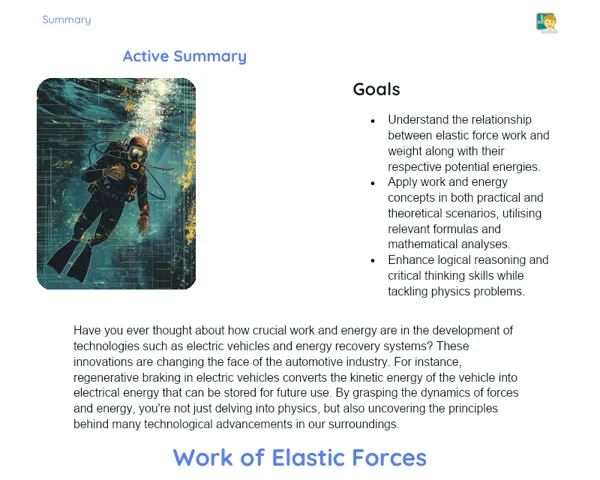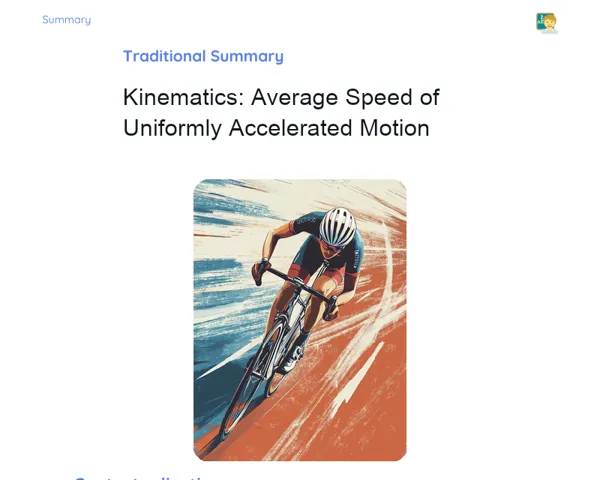Goals
1. Understand the phenomenon of wave reflection across different materials.
2. Identify whether a wave retains its characteristics or reverses upon reflection.
Contextualization
Waves are a part of our everyday lives, from sound waves that let us enjoy music and conversations, to electromagnetic waves that power everything from TV broadcasts to mobile signals. Grasping how waves behave when they hit obstacles, particularly in reflection, is key for a multitude of technological applications, such as in radar systems and communication signals. For example, sonar uses reflected waves to create maps of the ocean floor, and radio wave reflection helps enhance signal coverage in our mobile networks.
Subject Relevance
To Remember!
Principle of Wave Reflection
The principle of wave reflection tells us that when a wave meets a surface, it may bounce back, either preserving or reversing its properties based on the type of surface it encounters. This is governed by the law of reflection, which states that the angle of incidence equals the angle of reflection.
-
Law of Reflection: The angle at which the wave hits the surface is equal to the angle at which it bounces back.
-
Smooth Surface: Causes specular reflection, where the wave keeps its behaviour intact.
-
Rough Surface: Results in diffuse reflection, causing the wave to scatter in various directions.
Types of Reflection: Specular and Diffuse
Specular reflection happens on smooth surfaces, such as mirrors, where the reflected wave maintains a clear pattern. On the other hand, diffuse reflection occurs on rough surfaces like sandpaper, where the wave spreads out unpredictably.
-
Specular Reflection: Happens on smooth surfaces, resulting in a distinct reflected wave.
-
Diffuse Reflection: Takes place on rough surfaces, leading to a scattered reflected wave.
-
Practical Applications: Specular reflection is used in mirrors and lenses, while diffuse reflection is important in lighting and sound design.
Practical Applications of Wave Reflection
Grasping wave reflection has several practical implications across various technological fields. In acoustic engineering, it is crucial for the design of concert halls. In telecommunications, it’s key for effective signal transmission. In security, it’s utilized in radar and sonar technology.
-
Acoustic Engineering: Designing concert halls and recording studios for optimal sound.
-
Telecommunications: Enhancing signal coverage and minimizing interference.
-
Radar and Sonar Technologies: Assisting in detection and distance measurement.
Practical Applications
-
Utilization of sonars for underwater navigation, where sound waves bounce off submerged objects and return, enabling mapping of the ocean floor.
-
Improvement of signal coverage in telecommunications through radio wave reflection, enhancing reception and reducing dead zones.
-
Design of auditoriums and recording studios that require controlled reflection of sound waves to maintain acoustic quality.
Key Terms
-
Reflection: The process by which a wave returns to its medium after it hits a surface.
-
Angle of Incidence: The angle formed by the incoming wave and the normal to the surface where it hits.
-
Angle of Reflection: The angle made by the reflected wave and the normal to the surface at the reflection point.
-
Specular Reflection: Reflection off a smooth surface, preserving a clear pattern.
-
Diffuse Reflection: Reflection on a rough surface where waves scatter in multiple directions.
Questions for Reflections
-
How might comprehension of reflected wave behaviour enhance sound quality in acoustically designed spaces?
-
In what ways can we apply radio wave reflection to improve signal strength in crowded urban areas?
-
What challenges would you encounter while designing a radar system to identify distant objects? How would wave reflection impact your design?
Exploring Wave Reflection in Daily Life
This mini-challenge is designed to reinforce your understanding of wave reflection through a straightforward and engaging practical activity.
Instructions
-
Select a smooth surface in your home, such as a mirror, and a rough surface like a textured wall.
-
Use a flashlight to create a beam of light and first direct it toward the mirror, then towards the textured wall.
-
Observe how the reflected light behaves on each surface.
-
Document your findings, comparing the specular reflection from the mirror to the diffuse reflection from the textured wall.
-
Engage in a discussion with a colleague or family member about how these observations could be relevant in real-world applications, such as enhancing the acoustics of a venue or optimizing communication signals.



